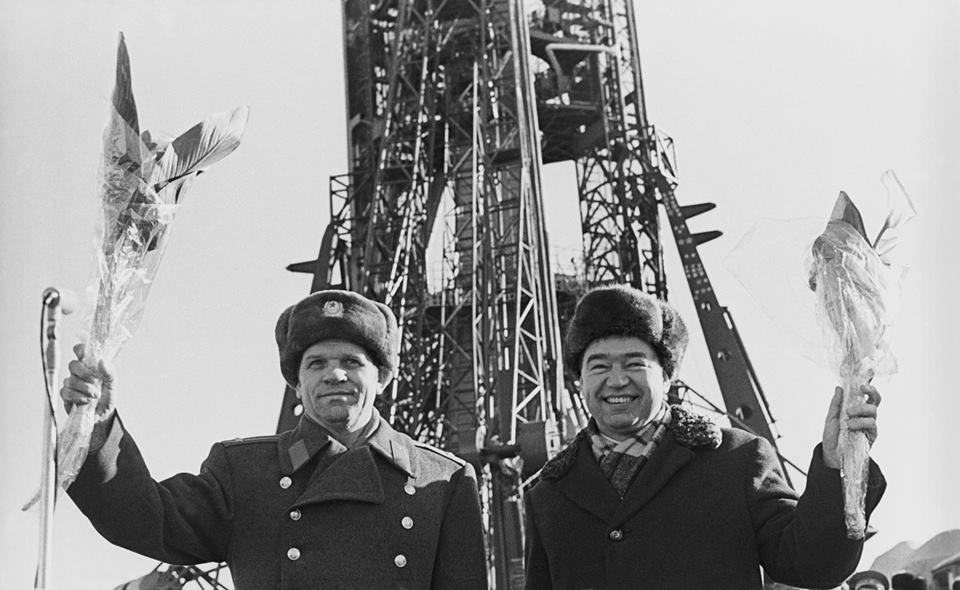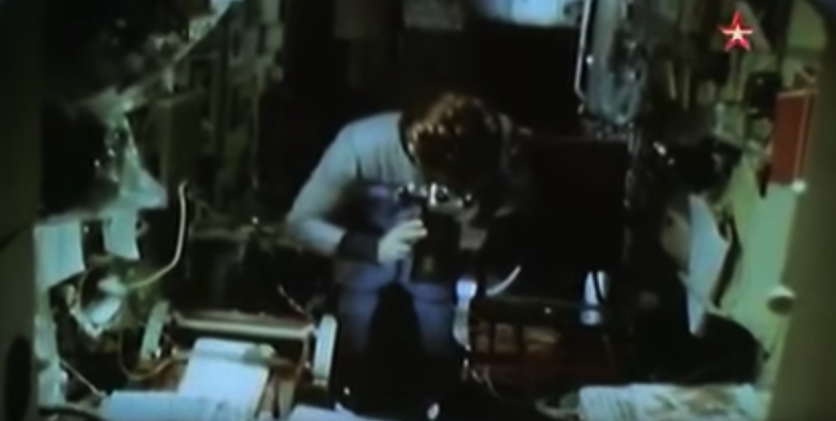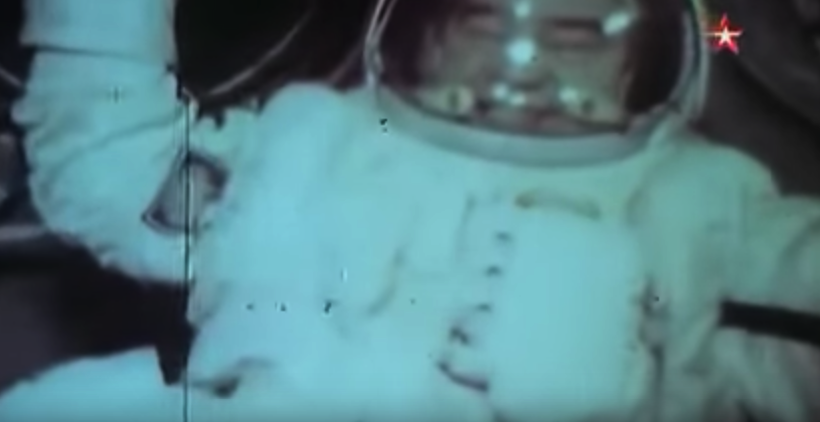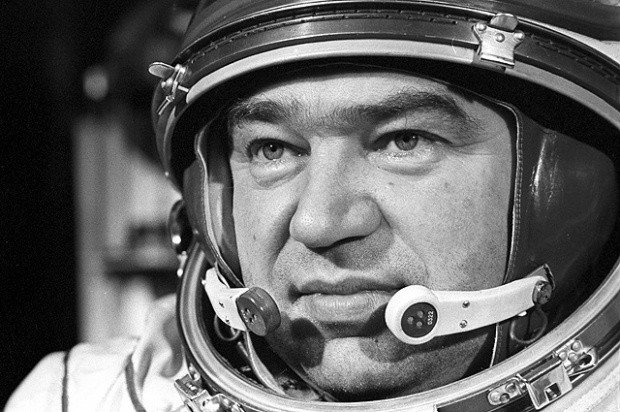Georgy Grechko
The flights will be best described by the cosmonaut. About them and we will talk today.
The first satellite
Georgy Grechko was born in Leningrad on May 25, 1931. His father was a junior researcher, and his mother was the chief engineer of the plant. Like Yuri Gagarin, during the war, Grechko lived in the occupied territory for about two years – his parents sent him to his grandmother in Ukraine before the Germans attacked.
In 1943, after the breakthrough of the Leningrad blockade, he returned to the city.
In 1955, Grechko graduated from the Leningrad Order of the Red Banner military-mechanical institute (now BSTU “Voenmekh” named after D. Ustinov), specializing in mechanical engineer and entered the work as an engineer in OKB-1. In 1957, he took part in the launch of the First Satellite.
On October 4, 1957, the R-7 carrier rocket with the satellite PS-1, 83.6-kilogram ball with a diameter of 58 centimeters started from Baikonur. The launch of “The Simplest Sputnik-1” required a huge amount of labor of OKB-1 employees under the leadership of Sergei Pavlovich Korolev. Engineer Grechko was responsible for calculating the trajectory of the device’s exit into orbit.
Before the distribution of computers directly mathematical calculations were done by people. In the OKB-1 in two shifts worked the calculators with electromechanical arithmometers, from nine in the morning until midnight they performed the role of a computer. In the process of preparation Grechko found out that the calculators use Bradis tables with four signs to solve trigonometric functions, and the fourth sign influences the correctness of the calculation in the trajectory in the exclusion area, on which rounding occurs in these tables. Therefore, the engineer brought the table Khrenova with eight signs after the comma and forced the “girls” to suffer. Toward the end of the preparations for the launch, the Big Electric counting machine came to replace the calculators.
The launch of “The Simplest Sputnik” was successful, shaking in the US the illusion that the immediate enemy is a technologically backward country. This was one of the victories in the space race.

The launch of the R-7 with the satellite “PS-1”
![] Image](https://myviralbox.com/wp-content/uploads/2017/04/1491866663_31_in-memory-of-georgy-grechko-geektimes.jpg)
The news of the First Satellite in Pravda

The news about the satellite in the New York Times ]
The civilian cosmonaut
Unlike members of the First Detachment, Grechko was not a military fighter pilot. He became one of the first civilian cosmonauts, the selection of which began in 1965 from OKB-1 engineers. Then they began to invite small groups to the survey. The fight for civilians in space began Sergei Korolev, they trained, masquerading as a football team, and the squad was formed only after the death of Sergei Pavlovich.
The first space ship was controlled by automatics. Yuri Gagarin could take over the management if necessary and successfully complete the mission. But who, apart from the fighter pilots, can control the most complicated equipment? The engineers who built these same ships. Therefore, they formed a new detachment. The military first disliked new colleagues, but then resigned themselves. The pilots and civilians were sent into space in pairs.
So it was in the first flight Grechko: the commander of the ship was Alexei Gubarev, who led the squadron of the 855th separate mine and torpedo air regiment of the Air Force of the Black Sea Fleet.
Grechko almost missed his chance. Sergey Korolev gathered young employees and said that they have a chance to become cosmonauts. The main thing is to pass the medical board and say why they need it. At that moment, Georgy Grechko was watching the movie “Last inch” in a children’s session.
And the first flight of George could not take place, because he, like Pavel Belyaev, broke his leg when jumping with a parachute. Vladimir Komarov helped him: “His leg will heal, but his head is good.” Grechko on crutches returned to the Star City.

Soyuz-17
In late 1974, the USSR put into orbit the station “Salyut-4.” On January 11, 1975, the ship Soyuz-17 departed for the station with a crew consisting of commander Alexei Gubarev and flight engineer Georgy Grechko. For both astronauts it was the first flight. But Grechko was one of the most prepared cosmonauts, because he was waiting for him for ten years.
The flight lasted 29 days 13 hours 20 minutes. The astronauts explored the Sun, planets and stars, studied the nature of solar active processes and various objects in areas of the spectrum that were inaccessible to ground-based equipment, and studied the earth’s surface and atmosphere. Among the medical and biological experiments were the examination of the human body under dose-related physical exertion.
There were about two tons of scientific equipment on Salyut-4. Upon arrival at the station, the astronauts noticed that the solar telescope “OST-1”, developed by the Crimean Astrophysical Observatory, does not work – the main mirror was damaged by direct sunlight due to the failure of the guidance system. Grechko started repairing his time for food and sleep, got reprimanded, but still repaired the equipment: “I used even medical equipment for this. It turns out – I did not fix it, but cured it. ”
On February 9, 1975 the crew returned to Earth. “When the time came for opening the parachute, it did not open. Gone are the seconds to reveal the second. And the second did not open. There is no third parachute, there is no drive, so there are a few more to live … Five minutes, three minutes. It’s very scary. It’s scary to die, “the cosmonaut said. In an extreme situation, instead of shouting “Mom!” Or swearing, he said to himself: “You are a test cosmonaut. There are a few minutes of life left. You should try to find out why, what’s broken, what does not work, what a refusal is in the ship. ” Grechko began to look for the cause and report all the readings of the instruments to Earth.
Fortunately, the parachute opened. And how the sail made the ship bounce off the surface several times and fly some distance along the ground: “When we were dragged from the ship and carried into the helicopter, I looked, such potholes were in the frozen virgin land.” Grechko later said that Gubarev’s reply, “Do not fuck yourself soft landing,” answered: “It is called soft only because we get very hard blows to the soft spot.”

The video from the “Salute-4”

Shooting with the ” Salute-4 “
” Soyuz-26 “
In 1977, the long-term station Salyut-6, which was more spacious and adapted for the life and work of astronauts, was launched into orbit than the Salyut-4.
The ship “Soyuz-25” with the first crew of the station on board could not dock to the front docking station. Vladimir Kovalyonok and Valery Ryumin returned to Earth, and the next crew had to find out what the problem was, and fix the malfunction.
On December 10, 1977 the ship Soyuz-26 launched from Baikonur. The commander of the ship was Yuri Romanenko, flight engineer – Georgy Grechko. This was the first major expedition of the scientific station. To examine the front docking station, the stations Romanenko and Grechko went out into open space. The exit lasted 1 hour 28 minutes, the docking station was in order.
For the first time cosmonauts used a system that fixed the legs of astronauts for work outside the station – the “anchor”. They left the exit from the docking assembly, which was not equipped with handrails. Grechko and Romanenko strengthened the hatch with soft hooks.
While Georgy Grechko was in space, his father died. The PMU decided not to report this to the astronaut. According to Vladimir Dzhanibekov, Grechko himself asked him a direct question. George dreamed it. A story with a touch of mysticism or a coincidence.

On May 16, 1978, after 96 days at the station, George Grechko and Yury Romanenko returned to Earth on the Soyuz-27 spacecraft. At that time it was a record stay at the station.

Soyuz T-14
Georgy Grechko made his third space flight in adulthood – in 1985 he was 54 years old. For 13 years he kept an age-long record, while in 1998 he was not surpassed by Valery Ryumin.
“Soyuz T-14” set off on the 17th of September 1985 to the station “Salyut-7”. The commander of the ship was Vladimir Vasyutin, the cosmonaut-researcher – Alexander Volkov, and Grechko became the flight engineer for the third time. The flight lasted several days, and Grechko and Vladimir Dzhanibekov returned to Earth on the Soyuz T-13 spacecraft on September 26, 1985.
After this expedition the cosmonaut was almost expelled from the detachment. He arbitrarily stopped for a few minutes the engines of the Soyuz T-13. From the MCC they demanded to stop the disgrace, but he did not pay attention. “You are no longer an astronaut!” – the operator shouted.
At that time there was not a single photo of the station on the background of the Earth – only against the blackness of the cosmos. The artists created collages and painted a station. Grechko decided to fix it, saw the right angle, calculated that the ship and the station would not collide, and shot the films. The general designer of the station on Earth asked the cosmonaut to sign photos of his offspring against the blue planet. Grechko said “I’m being kicked out of the astronauts for this picture.” “No, no, this will not happen,” the general said.



Crew of the Soyuz T-14 spacecraft. From left to right: Georgy Grechko, Alexander Volkov, Vladimir Vasyutin

Georgy Grechko was an astronaut. Each of these people is able to create heroic things in an extreme situation, to serve science and space exploration to the last. Grechko was an engineer, not a military man, and put science above obedience to orders.










